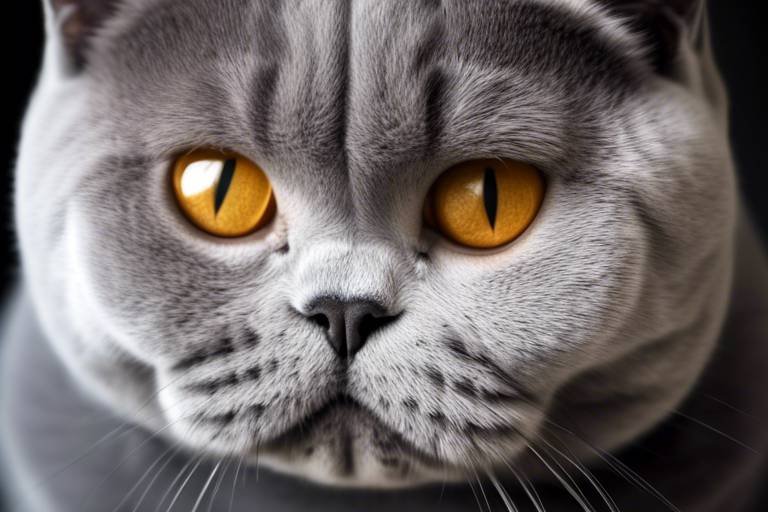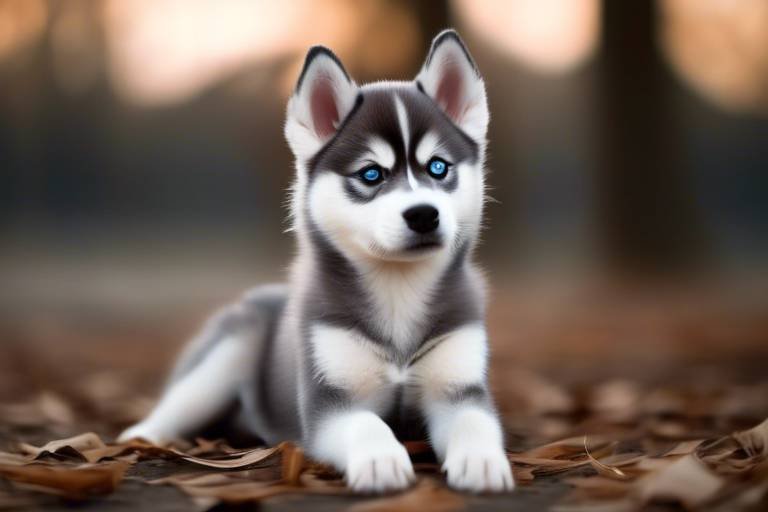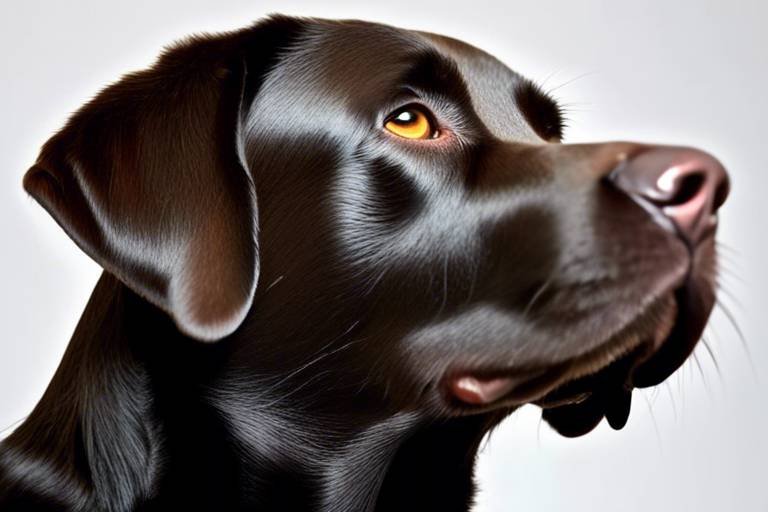The Gentle Spirit of the Shikoku Dog
The Shikoku dog, a breed that embodies both grace and strength, has captured the hearts of dog lovers around the world. Originating from Japan, this breed boasts a rich history intertwined with the culture and traditions of its homeland. With their gentle demeanor and striking appearance, Shikoku dogs make for exceptional companions, whether for families or individuals seeking a loyal friend. In this article, we will delve into the unique characteristics, history, care requirements, and the overall temperament of the Shikoku dog, shedding light on why they are so cherished.
Imagine a dog that is not only alert and intelligent but also possesses a calm and gentle spirit. The Shikoku dog is just that—a breed that balances energy with a serene disposition. Their loyal nature makes them protective yet affectionate, allowing them to form strong bonds with their human companions. As we explore their history, physical traits, and care needs, you'll discover why these dogs are more than just pets; they are family members.
As we journey through the various facets of the Shikoku dog, we will uncover the reasons behind their popularity and the responsibilities that come with welcoming one of these magnificent creatures into your home. From their fascinating origins to their grooming requirements and health considerations, every aspect contributes to the allure of the Shikoku. So, whether you're a seasoned dog owner or considering adding a Shikoku to your family, this guide will provide you with the essential knowledge to ensure a happy and fulfilling relationship with your canine companion.
The Shikoku dog has a rich history rooted in Japan, where it was originally bred for hunting. Understanding its origins helps appreciate its characteristics and temperament. The breed hails from the Shikoku Island, where it was primarily used for hunting deer and boar. This hunting background has endowed the Shikoku with a keen sense of smell and an agile physique, making them excellent hunters.
Historically, the Shikoku was valued not only for its hunting skills but also for its loyalty and companionship. As Japan modernized, the breed faced the threat of extinction. However, dedicated breeders worked tirelessly to preserve the Shikoku's lineage, ensuring that this remarkable breed continues to thrive today. Knowing their history allows us to understand the Shikoku's inherent traits, such as their independence and strong-willed nature, which are essential for their roles as both hunters and companions.
Shikoku dogs are medium-sized with a well-proportioned body, standing at about 17 to 21 inches tall. Their distinctive features, such as erect ears and curled tails, contribute to their striking appearance and charm. With a muscular build and a confident stance, Shikoku dogs exude an aura of strength and agility. Their expressive eyes reflect their intelligence and alertness, making them not just beautiful but also captivating companions.
The Shikoku's coat is dense and weather-resistant, typically coming in colors like sesame, red, or brindle. This section discusses the grooming needs and care for their coat. The double coat serves a dual purpose: it protects them from harsh weather while also keeping them comfortable in various climates. Regular grooming is essential to maintain the health of their coat and to minimize shedding.
Regular grooming is essential for maintaining the Shikoku's coat health. This includes brushing and seasonal shedding management to keep their fur in top condition. A simple brushing routine can prevent matting and reduce the amount of loose fur around the house. Additionally, keeping their ears clean and nails trimmed is crucial for their overall well-being.
Like all breeds, Shikoku dogs are prone to certain health issues. Regular veterinary check-ups and awareness of common conditions are crucial for their well-being. Some health concerns that Shikoku owners should be aware of include hip dysplasia and certain eye conditions. By staying proactive about their health, you can ensure that your Shikoku leads a long and healthy life.
Shikoku dogs are known for their gentle and loyal nature. This section explores their personality traits and how they interact with families and other pets. They are typically reserved with strangers but are affectionate and protective of their family members. This makes them excellent watchdogs, as they will alert you to any potential threats.
Training a Shikoku dog requires patience and consistency. Early socialization is vital to ensure they develop into well-adjusted companions. These dogs are intelligent and eager to please, which makes them relatively easy to train. However, their independent streak can sometimes lead to stubbornness, so employing positive reinforcement techniques is essential.
Obedience training helps establish a strong bond between the Shikoku and their owner. Positive reinforcement techniques are most effective for this intelligent breed. Utilizing treats and praise can motivate them to learn commands and behaviors, creating a harmonious relationship built on trust and respect.
Proper socialization exposes Shikoku dogs to various environments and experiences, helping them become confident and adaptable in different situations. Introduce them to different people, pets, and settings from a young age to ensure they grow up to be well-rounded dogs.
- Are Shikoku dogs good with children? Yes, they are generally gentle and protective, making them great companions for families.
- How much exercise do Shikoku dogs need? They require regular exercise, including daily walks and playtime, to keep them healthy and happy.
- Do Shikoku dogs shed a lot? They do shed, especially during seasonal changes, so regular grooming is important.
- Are Shikoku dogs easy to train? They are intelligent and eager to please, but consistency and positive reinforcement are key.
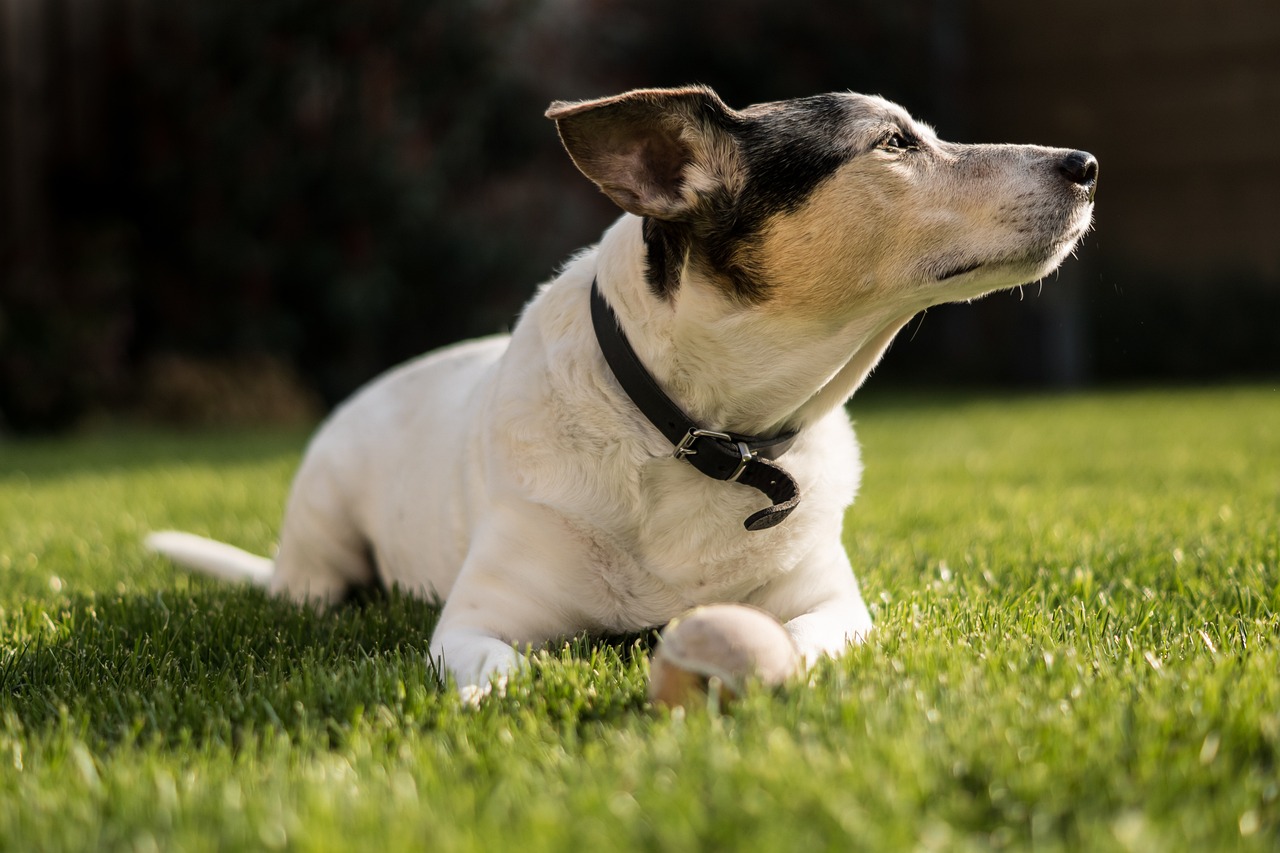
History of the Shikoku Dog
The Shikoku dog is a fascinating breed with a history that dates back to ancient Japan. Originally, these dogs were bred on the Shikoku Island, where they were utilized for hunting game such as boar and deer. Their keen senses and agility made them exceptional hunters, allowing them to thrive in the rugged terrains of their homeland. As you delve into their history, it's easy to see how their skills as hunters shaped their characteristics and temperament, making them not only effective working dogs but also loyal companions.
Interestingly, the Shikoku is one of the four native Japanese breeds, alongside the Akita, Kishu, and Shiba Inu. Each of these breeds has its own unique traits, but the Shikoku stands out for its remarkable balance of strength and gentleness. The breed's lineage can be traced back to the 14th century when they were recognized as a distinct breed. They were primarily used in hunting, which required not just physical prowess but also intelligence and a strong bond with their human handlers.
Over the centuries, the Shikoku dog has undergone various changes, influenced by both environmental factors and human intervention. While they were initially bred for their hunting abilities, their gentle spirit and loyalty have made them increasingly popular as family pets. In fact, many Shikoku dogs today are cherished not just for their hunting skills but also for their affectionate nature, making them wonderful companions for individuals and families alike.
In the mid-20th century, efforts were made to preserve the Shikoku breed as modernization began to threaten its existence. The breed was officially recognized in Japan in 1937, and by the 1980s, it gained international recognition. Today, the Shikoku dog is celebrated not only for its historical significance but also for its adaptability to various lifestyles. As we continue to explore the Shikoku's characteristics and care, it's essential to appreciate the rich history that has shaped this remarkable breed.
| Year | Milestone |
|---|---|
| 14th Century | Shikoku dogs are recognized as a distinct breed. |
| 1937 | Official recognition of the Shikoku breed in Japan. |
| 1980s | International recognition of the Shikoku dog. |
As we can see, the history of the Shikoku dog is not just about its origins as a hunting breed; it's also about its evolution into a beloved family companion. Understanding this history enriches our appreciation for the Shikoku's unique qualities and the gentle spirit that defines them.
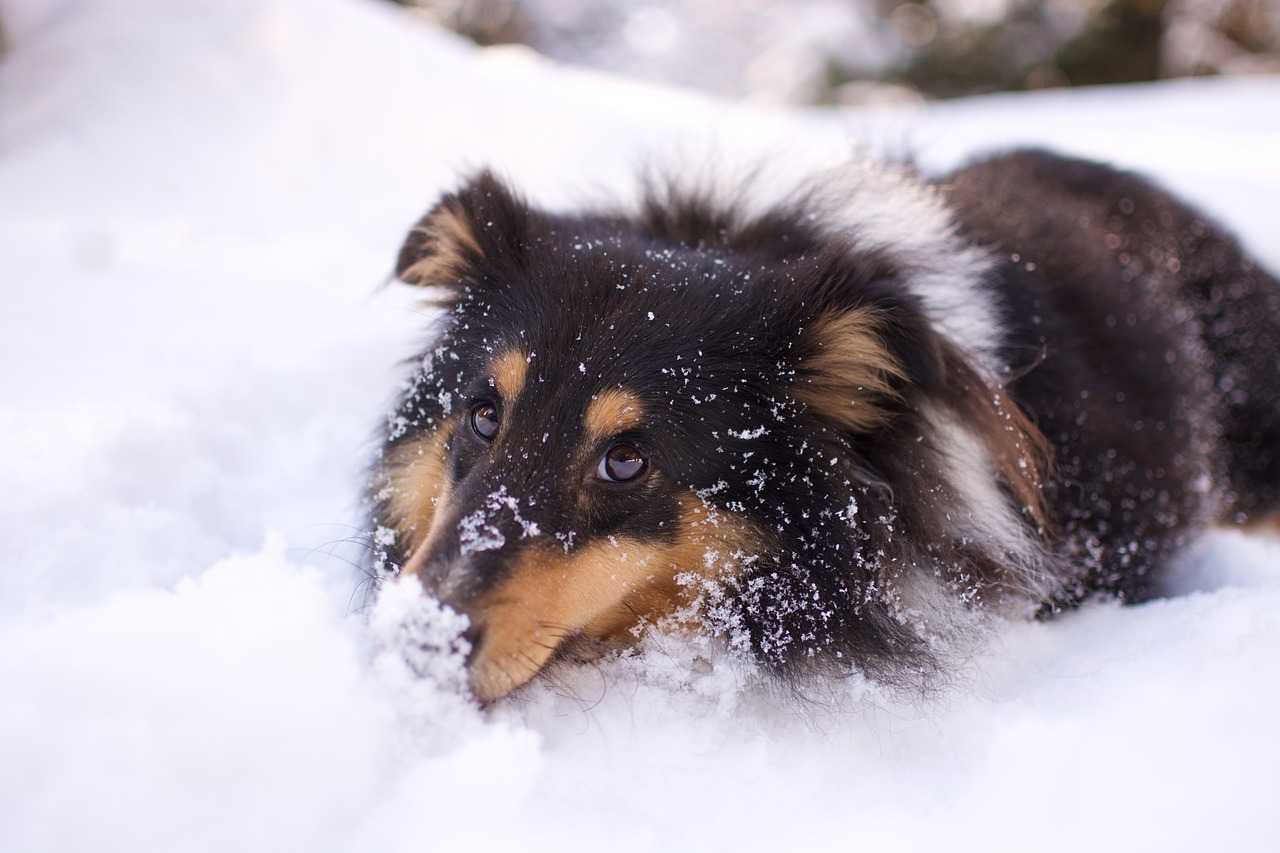
Physical Characteristics
The Shikoku dog is a remarkable breed that stands out not only for its gentle spirit but also for its distinctive physical traits. These dogs are medium-sized, typically weighing between 35 to 55 pounds, which makes them a comfortable fit for both apartment living and larger homes. Their well-proportioned bodies are built for agility and endurance, reflecting their history as hunting companions in the rugged terrains of Japan. With a height ranging from 17 to 22 inches at the shoulder, Shikoku dogs possess a balanced structure that is both elegant and functional.
One of the most striking features of the Shikoku is its erect ears, which give it an alert and attentive expression. These ears, combined with their bright, expressive eyes, create a captivating appearance that is hard to resist. The curled tail is another signature characteristic, often carried high over the back, adding to their overall charm. When you see a Shikoku in motion, it’s easy to appreciate their graceful gait, which showcases their strength and agility.
The Shikoku's coat is not just for looks; it serves a practical purpose as well. Their dense and weather-resistant fur protects them from harsh conditions, making them well-suited for outdoor activities. The coat is typically short to medium in length, requiring regular grooming to keep it healthy and shiny. Common colors include:
- Sesame: A mix of red and black hairs.
- Red: A vibrant, solid color that stands out.
- Brindle: A unique pattern that combines stripes of different colors.
Grooming is essential to maintain the Shikoku's coat, especially during seasonal shedding periods. Regular brushing helps remove loose hairs and prevents matting, while also allowing you to check for any skin issues. It's a bonding experience that not only keeps their coat in top condition but also reinforces your relationship with your furry friend.
When it comes to grooming, Shikoku dogs have moderate needs. While they don’t require extensive grooming like some long-haired breeds, maintaining their coat health is crucial. A simple routine of brushing once a week can go a long way in keeping their fur looking its best. During shedding seasons, which typically occur in spring and fall, you might find it beneficial to increase the frequency of brushing to manage the loose fur effectively.
Just like any other breed, Shikoku dogs are predisposed to certain health issues. Regular veterinary check-ups are vital to monitor their health and catch any potential problems early. Common health concerns for Shikoku dogs include hip dysplasia and eye disorders. Being proactive about their health care can significantly enhance their quality of life and longevity. By staying informed and attentive, you can ensure that your Shikoku remains a happy and healthy companion for years to come.
Coat and Color
The Shikoku dog boasts a stunning coat that not only enhances its beauty but also serves practical purposes. This medium-sized breed is covered in a dense, weather-resistant double coat, which is essential for their origins as hunting dogs in the rugged terrains of Japan. The outer layer is straight and harsh, while the undercoat is soft and insulating. This unique combination allows Shikoku dogs to thrive in various climates, whether it's the chill of winter or the heat of summer.
When it comes to color, Shikoku dogs are typically found in three primary shades: sesame, red, and brindle. Each color has its own unique charm, contributing to the breed's overall appeal. Here’s a quick overview of these colors:
| Color | Description |
|---|---|
| Sesame | A mix of red and black hairs, giving a unique and striking appearance. |
| Red | A solid and vibrant red coat that exudes warmth and energy. |
| Brindle | A beautiful pattern of stripes in a mix of colors, showcasing a wild and natural look. |
Grooming the Shikoku’s coat is not just about aesthetics; it plays a vital role in their health and comfort. Regular brushing is essential to remove loose fur and prevent matting, especially during the shedding seasons. Typically, Shikoku dogs shed moderately throughout the year, with heavier shedding occurring in spring and fall. Owners should prepare for these seasonal changes by increasing grooming frequency during these times.
Additionally, maintaining their coat is an opportunity for bonding. Spending time brushing your Shikoku not only keeps their fur in top condition but also provides a chance to check for any skin issues or parasites. It's a win-win situation! Remember, a well-groomed dog is a happy dog, and it reflects the care and love you provide.
In conclusion, the Shikoku dog's coat and color are not just about looks; they reflect the breed's history and adaptability. Understanding how to care for their unique fur will ensure that these gentle companions remain healthy and vibrant, ready to share their affectionate nature with families and individuals alike.
- How often should I groom my Shikoku dog? Regular grooming is recommended at least once a week, with increased frequency during shedding seasons.
- What colors do Shikoku dogs come in? They are typically found in sesame, red, and brindle colors.
- Do Shikoku dogs shed a lot? They shed moderately throughout the year, with heavier shedding in spring and fall.
Grooming Requirements
Grooming a Shikoku dog is not just about keeping them looking sharp; it's an essential part of their overall health and happiness. With their dense, weather-resistant coat, these dogs require regular maintenance to ensure their fur stays in top-notch condition. Think of grooming as a bonding experience—it's your time to connect with your furry friend while keeping them comfortable and clean.
First off, brushing is a crucial part of your grooming routine. Shikoku dogs typically shed moderately, which means regular brushing helps to remove loose fur and minimizes the amount of hair that ends up on your furniture and clothes. Aim for at least once a week, but during seasonal changes, you might find yourself brushing them a bit more often. This is when they tend to shed their undercoat, and a good brush can help manage that shedding effectively.
When it comes to grooming tools, a slicker brush or a pin brush works wonders for their coat. If you’re unsure about which tools to use, don’t hesitate to ask your veterinarian or a professional groomer for recommendations. They can provide you with insights tailored specifically to your Shikoku's coat type.
Next, let’s talk about bathing. Shikoku dogs don’t require frequent baths—typically, every three to four months is sufficient unless they get into something particularly messy. Overbathing can strip their coat of natural oils, leading to dryness and irritation. When you do bathe them, use a high-quality dog shampoo that’s gentle on their skin. Make sure to thoroughly rinse out the shampoo to avoid any residue that could cause itching.
Another important aspect of grooming is nail trimming. Keeping your Shikoku's nails trimmed is essential for their comfort and health. Long nails can lead to painful walking and even joint issues over time. Aim to trim their nails every 3-4 weeks, or as needed. If you’re unsure about how to trim nails, consider watching a few tutorial videos or asking a professional groomer for a demonstration.
Lastly, don’t forget about their ears and teeth. Regularly check their ears for dirt or wax buildup, and clean them gently with a vet-approved solution as needed. Dental hygiene is also crucial; brushing their teeth a few times a week can help prevent dental issues down the line. Your Shikoku will thank you for it with a happy wag of their tail!
In summary, grooming your Shikoku dog is a rewarding activity that goes beyond aesthetics. It strengthens your bond and ensures your furry friend remains healthy and happy. By following these grooming requirements, you’ll keep your Shikoku looking fabulous and feeling great!
- How often should I groom my Shikoku? Regular grooming should be done at least once a week, with more frequent brushing during shedding seasons.
- Can I use human shampoo on my Shikoku? No, it’s best to use a dog-specific shampoo to avoid skin irritation.
- What if my Shikoku doesn’t like being groomed? Start slowly and make it a positive experience with treats and praise. Patience is key!
- How can I tell if my Shikoku needs a bath? If they start to smell or their coat looks greasy, it’s time for a bath.
Health Considerations
When it comes to the health of your beloved Shikoku dog, understanding their unique needs is paramount. Like any breed, Shikoku dogs have their share of potential health issues that owners should be aware of. Regular veterinary check-ups are essential to catch any problems early on. Some common health concerns in Shikoku dogs include hip dysplasia, eye disorders, and skin allergies. Being proactive about their health can make a world of difference.
Hip dysplasia is a genetic condition that affects the hip joint, leading to discomfort and mobility issues. Keeping your Shikoku at a healthy weight can help mitigate this risk. Eye disorders, such as cataracts or progressive retinal atrophy, can also occur, so regular eye examinations are recommended. Moreover, Shikokus are known for their dense coats, which can sometimes lead to skin allergies or irritations, particularly if they are not groomed properly. Regular grooming and bathing can help keep their skin healthy and reduce the likelihood of these issues.
To give you a clearer picture, here's a brief overview of some health considerations for Shikoku dogs:
| Health Concern | Description | Preventive Measures |
|---|---|---|
| Hip Dysplasia | A genetic condition affecting the hip joint. | Maintain a healthy weight, regular vet check-ups. |
| Eye Disorders | Conditions like cataracts or progressive retinal atrophy. | Regular eye examinations, monitor for signs of vision problems. |
| Skin Allergies | Allergic reactions that can cause irritation. | Regular grooming, proper bathing, and monitoring for irritants. |
Being aware of these common health issues is just the beginning. It’s crucial to establish a routine that includes regular exercise, a balanced diet, and mental stimulation. Engaging your Shikoku in activities that challenge their intellect and physical abilities can contribute to their overall well-being and happiness. After all, a healthy dog is a happy dog!
- What is the average lifespan of a Shikoku dog?
The average lifespan of a Shikoku dog is typically between 12 to 15 years, depending on their overall health and care.
- Are Shikoku dogs good with children?
Yes, Shikoku dogs are known for their gentle and loyal nature, making them great companions for families with children.
- How much exercise does a Shikoku dog need?
Shikoku dogs require regular exercise, ideally around 30 to 60 minutes daily, to keep them healthy and mentally stimulated.
- Do Shikoku dogs shed a lot?
They do shed, especially during seasonal changes, so regular grooming is essential to manage their coat and minimize shedding.
Temperament and Behavior
The Shikoku dog is not just a pretty face; their temperament is as captivating as their appearance. Known for their gentle and loyal nature, these dogs are truly remarkable companions. Imagine a friend who is always there to cheer you up, offering unwavering support and affection—that's what a Shikoku brings to the table. They are incredibly affectionate and thrive on human interaction, making them excellent family pets. Their playful demeanor and eagerness to please can light up any room, and they often form strong bonds with their owners.
One of the defining traits of the Shikoku is their intelligence. This breed is quick to learn and can pick up commands with relative ease. However, this intelligence can also lead to a bit of stubbornness. Think of it like trying to convince a teenager to do their chores; sometimes, they just want to do things their way! Therefore, patience and consistency in training are key. They respond best to positive reinforcement techniques—praise, treats, and lots of love go a long way in shaping their behavior.
In terms of social interaction, Shikoku dogs are generally friendly with children and other pets, but early socialization is crucial. This means introducing them to various people, environments, and experiences while they are still young. It’s like teaching a child to ride a bike; the more practice they get, the more confident they become. A well-socialized Shikoku will be adaptable and less likely to develop behavioral issues as they grow older.
However, it’s important to note that Shikoku dogs can exhibit a strong prey drive due to their hunting background. This means they might be inclined to chase smaller animals, so supervision is essential, especially in open spaces. Think of them as a mix between a loyal companion and a spirited adventurer, always ready to explore yet needing guidance to stay on the right path.
Overall, the Shikoku's temperament is a beautiful blend of loyalty, intelligence, and playfulness. They are not just pets; they are family members who bring joy and warmth into the home. With the right training and socialization, these dogs can become not only well-behaved companions but also beloved friends who enrich our lives in countless ways.
- Are Shikoku dogs good with children? Yes, they are generally friendly and affectionate with children, especially when socialized from a young age.
- How much exercise do Shikoku dogs need? They require regular exercise, including walks and playtime, to keep them healthy and happy.
- Do Shikoku dogs shed a lot? They do shed, especially during seasonal changes, so regular grooming is necessary to manage their coat.
- Are Shikoku dogs easy to train? They are intelligent and can be trained easily with positive reinforcement, but they may show some stubbornness.
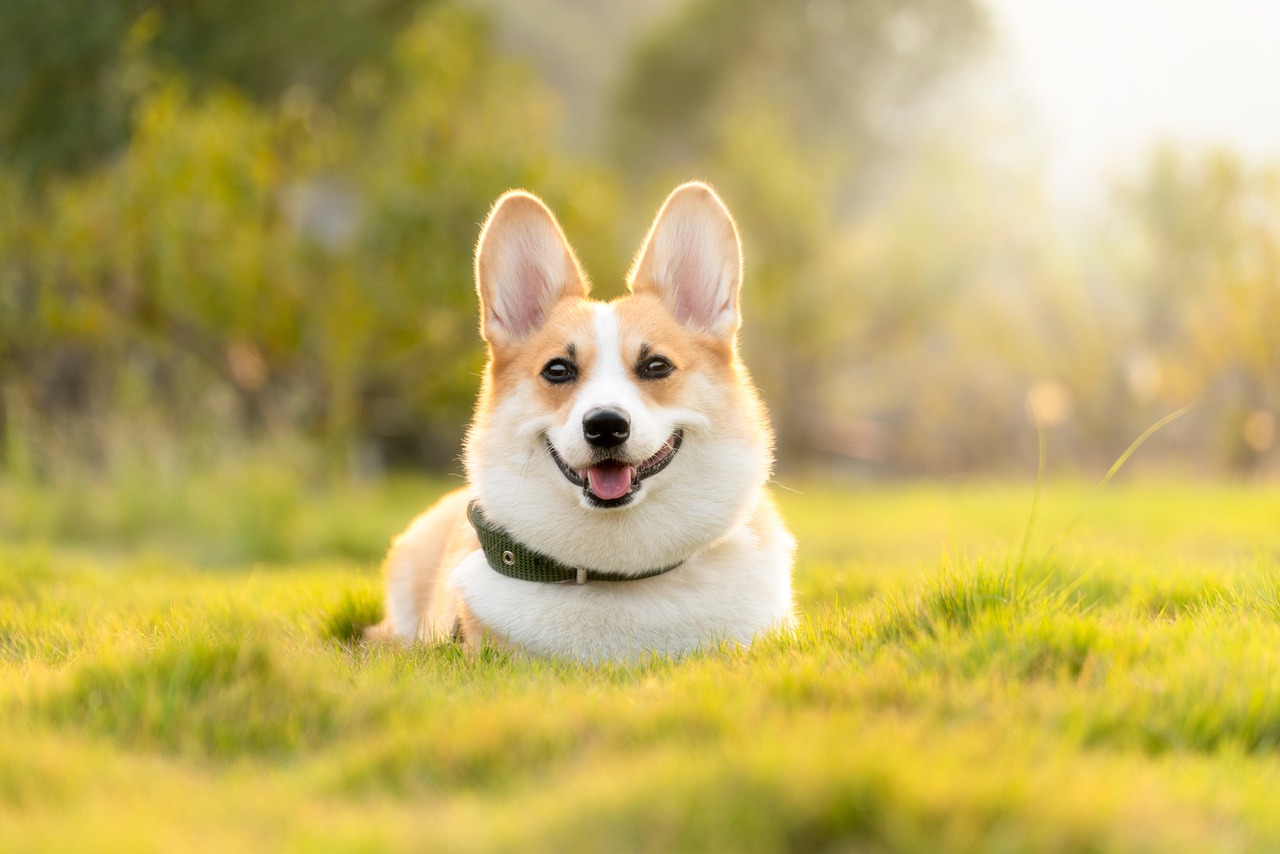
Training and Socialization
Training a Shikoku dog can be a rewarding experience, but it requires a good dose of patience and consistency. These dogs are intelligent and eager to please, which makes them quite responsive to training. However, they also possess a strong independent streak, which can sometimes lead to stubbornness. This is where the importance of early socialization comes into play. By exposing your Shikoku to a variety of environments, people, and other animals during their formative months, you help them develop the confidence and adaptability they need to thrive in different situations.
Socialization isn't just about meeting new friends; it’s about creating a well-rounded dog that can handle the ups and downs of life. Think of it as teaching your Shikoku the ropes of the world. Imagine how overwhelming it could be for a dog to encounter a bustling city street or a crowded park for the first time without any prior exposure. Early socialization helps mitigate fears and anxieties, allowing your Shikoku to navigate these scenarios with ease. It's like giving them a passport to the world, filled with exciting adventures and new experiences!
When it comes to obedience training, Shikoku dogs respond best to positive reinforcement techniques. This means rewarding good behavior with treats, praise, or playtime, rather than resorting to harsh corrections. A simple yet effective training session might look like this:
| Command | Training Tip | Reward |
|---|---|---|
| Sit | Use a treat to guide their nose upwards while gently pushing their rear down. | Give a treat and praise immediately when they sit. |
| Stay | Start with short durations and gradually increase the time. | Reward with a treat and affection when they stay put. |
| Come | Call them enthusiastically and back away to encourage them to approach. | Offer a favorite toy or treat as a reward for coming. |
As you embark on this training journey, remember that consistency is key. Establish a routine, use clear commands, and practice regularly. Training sessions should be short and engaging to keep your Shikoku’s attention. Think of it as a game; the more fun you have, the more your dog will want to participate!
Lastly, consider enrolling your Shikoku in a training class or a socialization group. This not only provides a structured environment for learning but also allows your dog to interact with others, reinforcing their social skills. It's a win-win situation that can lead to a happy, well-adjusted companion who is a joy to have around.
- How long does it take to train a Shikoku dog? Training duration varies, but with consistent practice, basic commands can be learned in a few weeks.
- Are Shikoku dogs good with children? Yes, Shikoku dogs can be great companions for children when properly socialized from a young age.
- What is the best way to socialize my Shikoku? Expose them to different environments, people, and other pets gradually and positively.
Obedience Training
When it comes to training your Shikoku dog, patience and consistency are your best friends. This breed is known for its intelligence and eagerness to learn, but like any dog, they require a structured approach to training. One of the most effective methods is to start with basic commands such as sit, stay, and come. These commands not only lay the groundwork for obedience but also help in building a strong bond between you and your furry friend.
Shikoku dogs thrive on positive reinforcement. This means rewarding them with treats, praise, or playtime whenever they successfully follow a command. Imagine trying to learn a new skill without any encouragement—frustrating, right? That's how your dog feels without positive feedback. By using rewards, you create a fun and engaging atmosphere that motivates your Shikoku to learn and obey.
Moreover, consistency in your commands and training schedule is crucial. If you say "sit" one day and "down" the next without clear guidance, your Shikoku might get confused. It’s like trying to understand a language without a dictionary—everything feels jumbled. To avoid this, establish a routine where you practice commands daily. Short, frequent sessions are often more effective than longer, sporadic ones. Aim for about 10 to 15 minutes of focused training each day, and gradually increase the complexity of the commands as your dog masters the basics.
In addition to basic obedience, socialization is a vital aspect of training. Shikoku dogs, while naturally friendly, can be reserved around new people or pets if not properly socialized. Exposing them to different environments, sounds, and situations will help them become more adaptable. Think of it as taking a child to a playground for the first time—they need to explore and learn how to interact with others. You can arrange playdates with other dogs, visit dog parks, or even enroll in group training classes. This exposure will not only enhance their social skills but also make them more confident in various situations.
Lastly, don’t forget to have fun! Training should be an enjoyable experience for both you and your Shikoku. Incorporate games into your routine, like hide and seek, or use toys as rewards. This not only keeps your dog engaged but also strengthens your relationship. Remember, a well-trained Shikoku dog is not just obedient; they're a happy companion ready to share countless adventures with you!
- How long does it take to train a Shikoku dog? Training duration varies, but with consistent practice, you can see results in a few weeks.
- Can Shikoku dogs be trained off-leash? Yes, but it's crucial to establish a strong recall command and ensure they are well-socialized.
- What age should I start training my Shikoku? It's best to start training and socialization as early as possible, ideally when they are puppies.
- Are Shikoku dogs stubborn? They can be independent thinkers, which may come off as stubbornness, but with the right approach, they can be very responsive.
Socialization Tips
When it comes to socializing your Shikoku dog, think of it as opening a door to a world of experiences that will shape their personality and behavior. Just like a child learns through play and interaction, your Shikoku will thrive when exposed to a variety of environments, people, and other animals. Start early! The first few months of your dog's life are crucial for developing their social skills. If you can, introduce them to new experiences every week. This could be as simple as a walk in a different park, a visit to a pet-friendly café, or even a trip to the vet just to say hi.
One of the best ways to ensure your Shikoku grows into a well-adjusted adult is through positive reinforcement. Reward them with treats, praise, or playtime when they encounter something new and react positively. This builds their confidence and helps them associate new experiences with good things. For example, if your Shikoku meets a new dog and behaves well, shower them with affection and a tasty treat. It's like giving them a gold star for their bravery!
Consider enrolling your Shikoku in puppy classes or socialization groups. These environments are perfect for teaching your dog how to interact with others while under the watchful eye of a trainer. Plus, they get to meet other dogs and humans, which is fantastic for their social development. Remember, the goal is to expose them to as many different sights, sounds, and smells as possible. This can include:
- Different types of people: young, old, men, women, and children.
- Various environments: busy streets, quiet parks, and bustling markets.
- Other animals: not just dogs, but also cats, birds, and even farm animals if possible.
Lastly, don't forget about the importance of ongoing socialization. Just because your Shikoku is now an adult doesn't mean the work is done. Continue to expose them to new situations regularly. Think of it as a lifelong journey; the more experiences they have, the more adaptable and confident they will become. This will not only enrich their lives but also enhance your bond with them. After all, a well-socialized Shikoku is not just a happy dog, but also a joy to have around!
Q: How early should I start socializing my Shikoku?
A: It's best to start socializing your Shikoku as early as possible, ideally during the critical socialization period between 3 and 14 weeks of age. However, socialization can continue throughout their life.
Q: What should I do if my Shikoku is scared or aggressive towards new experiences?
A: If your dog shows fear or aggression, take a step back. Use positive reinforcement techniques to encourage calm behavior and gradually introduce them to new experiences at their own pace.
Q: How can I tell if my Shikoku is well-socialized?
A: A well-socialized Shikoku will typically be confident, relaxed, and friendly in new situations. They should be able to interact appropriately with other dogs and people without excessive fear or aggression.
Frequently Asked Questions
- What is the origin of the Shikoku dog?
The Shikoku dog hails from Japan, where it was originally bred for hunting. This breed has a rich history that dates back centuries, and understanding its origins gives insight into its unique characteristics and temperament.
- What are the physical characteristics of a Shikoku dog?
Shikoku dogs are medium-sized with a well-proportioned body. They have distinctive features such as erect ears and curled tails, which contribute to their striking appearance. Their coat is dense and weather-resistant, typically coming in colors like sesame, red, or brindle.
- How often should I groom my Shikoku dog?
Regular grooming is essential for maintaining a Shikoku's coat health. It's recommended to brush them at least once a week, and more frequently during seasonal shedding periods. This helps prevent matting and keeps their fur in top condition.
- What health issues are common in Shikoku dogs?
Like all breeds, Shikoku dogs can be prone to certain health issues. Common conditions include hip dysplasia and eye problems. Regular veterinary check-ups and being aware of these potential issues are crucial for ensuring their well-being.
- Are Shikoku dogs good with children and other pets?
Yes, Shikoku dogs are known for their gentle and loyal nature, making them great companions for families. With proper training and socialization, they can also get along well with other pets, adapting to various household dynamics.
- What training methods work best for Shikoku dogs?
Training a Shikoku dog requires patience and consistency. Positive reinforcement techniques are most effective for this intelligent breed. Establishing a strong bond through obedience training helps them become well-adjusted companions.
- How can I socialize my Shikoku dog effectively?
Proper socialization involves exposing Shikoku dogs to various environments, people, and experiences from a young age. This helps them develop confidence and adaptability, making them more comfortable in different situations as they grow.



